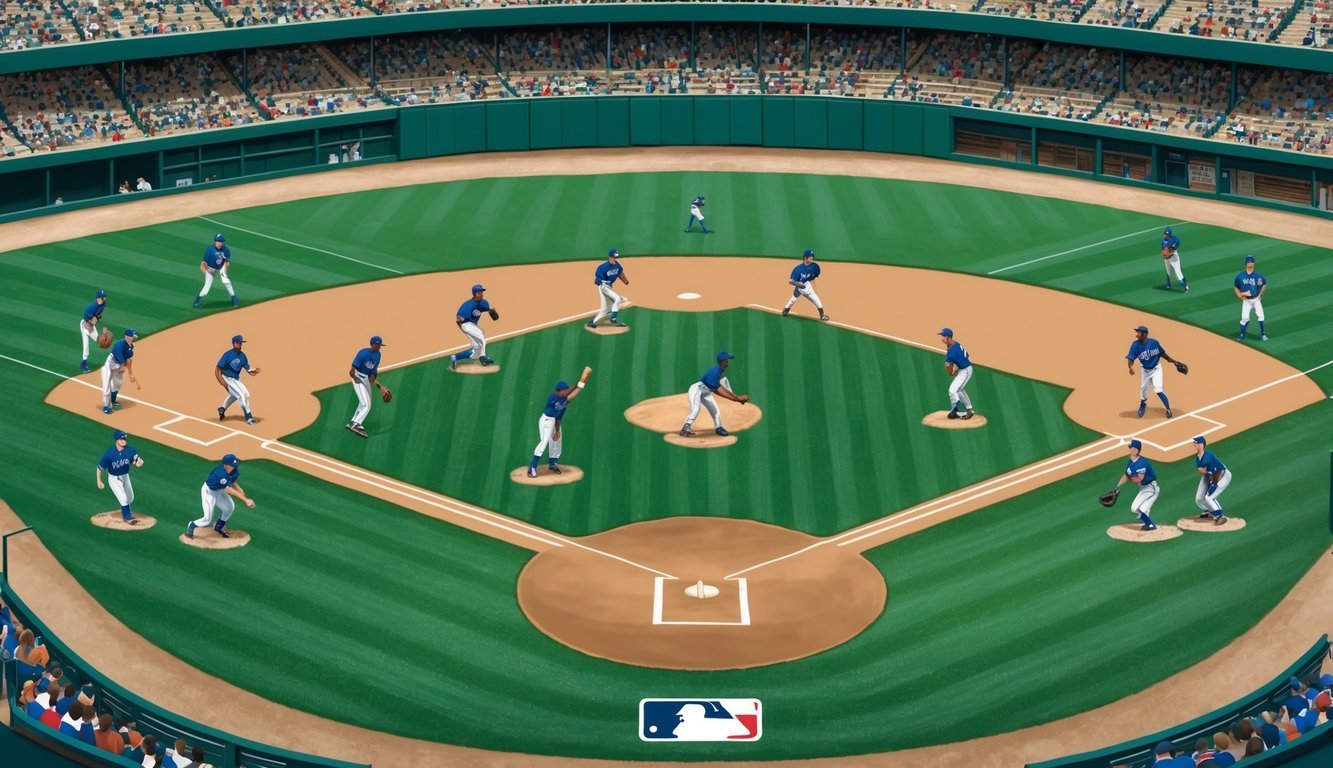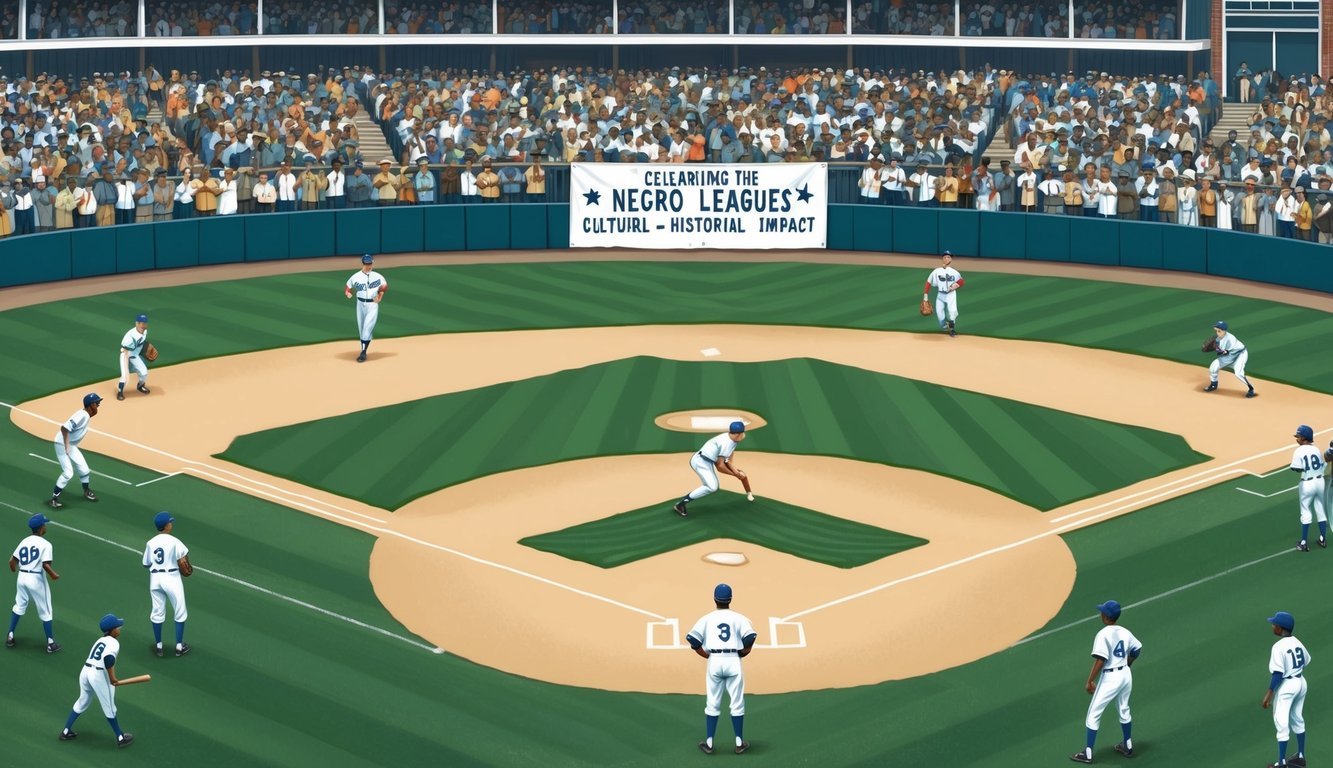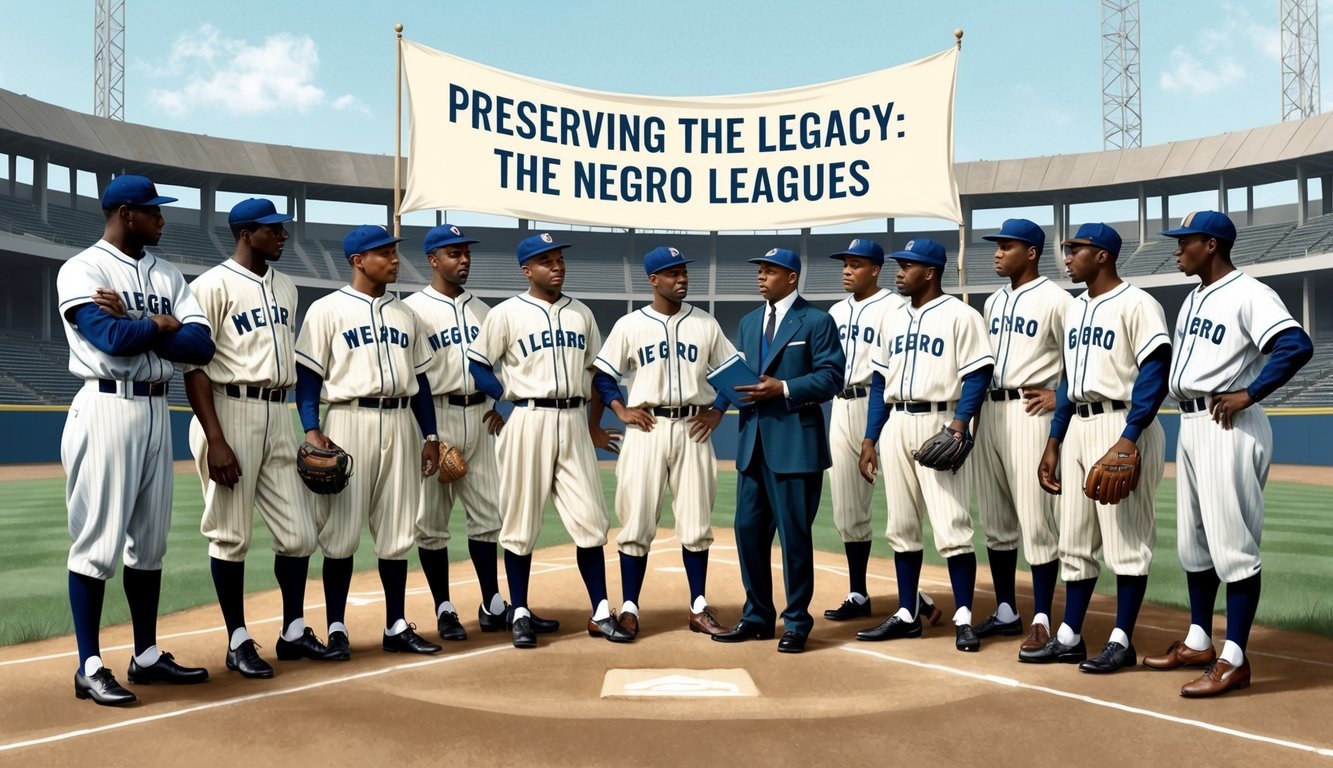The Negro leagues played a pivotal role in American baseball history, showcasing the talents of African American and Hispanic players from 1920 to 1960.
These leagues emerged as a response to racial segregation in Major League Baseball, providing opportunities for Black athletes to compete at a professional level.
The Negro National League, founded in 1920 by Rube Foster, marked the beginning of organized Black baseball and paved the way for future generations of players. Stars like Satchel Paige, Josh Gibson, and Cool Papa Bell became legends in their own right, demonstrating skills that rivaled or surpassed those of their white counterparts in the major leagues.
The legacy of the Negro leagues extends far beyond the baseball diamond.
These leagues not only preserved and advanced the sport during segregation but also contributed to the civil rights movement by challenging racial barriers.
Today, baseball fans and historians alike celebrate the Negro leagues’ contributions to America’s pastime and their lasting impact on the game we love.
Origins and Development
The Negro leagues emerged from racial segregation in American baseball.
Their rise showcased the talent and determination of Black players excluded from the major leagues.
Early Beginnings and Segregation
Baseball’s color bar took hold in the late 19th century.
After the Civil War, a few Black players competed on integrated teams.
But by the 1890s, unwritten rules barred African Americans from organized baseball.
Undeterred, Black players formed their own teams.
The Cuban Giants, founded in 1885, became one of the first professional Black teams.
Other notable early clubs included the Page Fence Giants and the Chicago Columbia Giants.
These teams barnstormed across the country, playing each other and white semi-pro clubs.
Despite segregation, they drew large, enthusiastic crowds.
Rube Foster and the Negro National League
Rube Foster, a brilliant pitcher and manager, envisioned a stable league for Black teams.
In 1920, he founded the Negro National League (NNL) with eight Midwestern teams.
Foster’s league brought structure to Black baseball.
It established schedules, contracts, and a championship series.
The NNL’s success inspired imitators, like the Eastern Colored League in 1923.
Foster’s vision went beyond sports.
He saw the league as a way to promote Black economic independence and pride.
The Expansion of Leagues and Teams
The 1920s and 1930s saw rapid growth in Black baseball.
New leagues formed, including the Negro American League and Negro Southern League.
Talented players like Satchel Paige and Josh Gibson became household names.
Negro league teams played in major league stadiums when the home teams were away.
Some, like the Kansas City Monarchs, invested in portable lighting systems for night games.
The leagues faced challenges from the Great Depression and World War II.
But they persevered, showcasing extraordinary talent and providing entertainment for millions of fans.
Legendary Teams and Players
The Negro Leagues showcased extraordinary talent and produced some of baseball’s greatest teams and players.
These leagues were home to iconic franchises, influential athletes, and record-breaking performances that left an indelible mark on the sport’s history.
Many players from the Negro Leagues, such as Satchel Paige and Josh Gibson, later earned their place in legendary baseball biographies that celebrate their remarkable contributions to the game.
Despite facing racial barriers and segregation, these athletes demonstrated unparalleled skill and resilience, inspiring future generations.
The legacy of the Negro Leagues continues to influence baseball, reminding us of the sport’s rich tapestry and the undeniable impact of its unsung heroes.
Iconic Teams
The Homestead Grays dominated the Negro National League for years.
Based in Pittsburgh, they won nine consecutive league titles from 1937 to 1945.
The Kansas City Monarchs were another powerhouse, known for their innovative use of portable lights for night games.
The Pittsburgh Crawfords boasted a roster of future Hall of Famers in the 1930s.
They were considered one of the best teams ever assembled.
Chicago’s American Giants were a force to be reckoned with, claiming multiple championships in the 1920s and 1930s.
The Indianapolis Clowns later gained fame for their entertaining style of play and for signing a young Hank Aaron.
Influential Players
Josh Gibson, often called the “Black Babe Ruth,” was a hitting sensation for the Homestead Grays and Pittsburgh Crawfords.
His powerful swing and high batting averages made him a legend.
Satchel Paige’s incredible pitching skills and longevity amazed fans for decades.
He eventually made it to the Major Leagues at the age of 42.
Cool Papa Bell was known for his blazing speed on the basepaths.
Buck Leonard, Gibson’s teammate on the Grays, earned the nickname “Black Lou Gehrig” for his consistent power hitting.
Jackie Robinson, who broke MLB’s color barrier in 1947, honed his skills with the Kansas City Monarchs before making history with the Brooklyn Dodgers.
Record Breakers and Statistics Leaders
Negro League statistics are often incomplete, but some remarkable achievements stand out.
Gibson reportedly hit .441 in 1943, one of the highest single-season batting averages ever recorded.
Paige’s strikeout totals were legendary.
In one season, he was said to have struck out 21 batters in a single game.
Cool Papa Bell’s speed led to numerous stolen base records.
Some accounts claim he once stole 175 bases in a single season.
Many players boasted incredible slugging percentages.
Oscar Charleston, another Negro League great, was said to have slugged over .700 in multiple seasons.
Key Events and Integration

The Negro Leagues saw several pivotal moments that shaped their history and impact on baseball.
From championship series to groundbreaking player signings, these events paved the way for integration and left a lasting legacy.
The Negro World Series
The Negro World Series began in 1924, showcasing the top talent from the Negro Leagues.
This annual championship series brought excitement and pride to Black communities across America.
The Kansas City Monarchs won the first Negro World Series, defeating the Hilldale Club.
Over the years, powerhouse teams like the Homestead Grays and Pittsburgh Crawfords dominated the series.
The Negro World Series helped raise the profile of Black baseball and its star players.
It proved the high level of skill and competitiveness in the Negro Leagues.
Integration Milestones
Jackie Robinson broke baseball’s color barrier in 1947 when he joined the Brooklyn Dodgers.
This historic moment came after years of advocacy and talent scouting by Dodgers executive Branch Rickey.
Robinson faced intense racism but persevered, paving the way for other Black players.
Larry Doby integrated the American League later in 1947 with the Cleveland Indians.
More teams began signing Black players in the following years.
By 1959, every MLB team had integrated.
This influx of talent from the Negro Leagues raised the overall level of play in the majors.
Decline and Legacy
As more stars left for MLB, the Negro Leagues declined in the 1950s and 1960s.
The Great Depression and World War II had already strained finances for many teams.
Though the leagues faded, their impact endured.
They nurtured incredible talent and created opportunities when MLB excluded Black players.
Stars like Satchel Paige and Josh Gibson became legends.
The Negro Leagues Baseball Museum in Kansas City preserves this important history.
In 2020, MLB officially recognized several Negro Leagues as major leagues, validating their talent and achievements.
Cultural and Historical Impact

The Negro Leagues left an indelible mark on American society, challenging racial norms and paving the way for integration in baseball and beyond.
Their influence extended far beyond the diamond, shaping culture and pushing for civil rights.
Influence on American Culture
Negro Leagues baseball captivated fans with its exciting style of play.
The leagues fostered a sense of pride and community among African Americans.
Players became local heroes and role models.
Negro Leagues games were social events, featuring music and entertainment.
This atmosphere influenced the development of jazz and other cultural expressions.
The leagues also inspired literature and art.
Playwrights like August Wilson incorporated Negro Leagues themes into their work. “Fences” tells the story of an ex-Negro Leaguer in Pittsburgh, exploring how baseball gave a sense of belonging.
Racial Barriers and Civil Rights
Negro Leagues players faced segregation on and off the field.
They often couldn’t stay in the same hotels or eat at the same restaurants as white teams when traveling.
Despite these obstacles, the leagues showcased African American talent and business acumen.
This success challenged stereotypes and contributed to the civil rights movement.
When Jackie Robinson broke the color barrier in Major League Baseball in 1947, it was a significant moment in the fight for equality.
Many view this as a precursor to broader civil rights gains in the 1950s and 60s.
The Negro Leagues’ legacy continues to educate about racial injustice and celebrate African American achievements in sports and society.
Preserving the Legacy

Efforts to honor the Negro Leagues’ impact on baseball and American culture continue through museums, hall of fame recognition, and tributes from MLB teams.
These initiatives keep the stories and achievements of Black players alive for future generations.
Negro Leagues Baseball Museum
The Negro Leagues Baseball Museum in Kansas City stands as a cornerstone of remembrance.
Founded in 1990, it showcases artifacts, photographs, and interactive exhibits that bring the era to life.
Visitors can explore replicas of stadium lockers and learn about legendary players like Satchel Paige and Josh Gibson.
The museum hosts special events and educational programs throughout the year.
Its “Heart of America Hot Dog Festival” celebrates the connection between baseball and America’s favorite ballpark snack.
School tours introduce young fans to this important chapter of sports history.
Hall of Fame Inductees
The National Baseball Hall of Fame has worked to recognize Negro Leagues stars.
In 2006, a special committee elected 17 figures from Black baseball to the Hall.
This group included players, executives, and pioneers who had been overlooked for decades.
Buck O’Neil, a player and manager for the Kansas City Monarchs, was posthumously inducted in 2022.
His election highlighted his contributions both on and off the field.
O’Neil had been a tireless advocate for preserving Negro Leagues history.
Modern Recognition and Tributes
MLB teams now regularly host Negro Leagues tribute nights.
During these nights, players wear throwback uniforms honoring teams like the Homestead Grays and Kansas City Monarchs.
These events often feature appearances by former players or their families.
In 2020, MLB officially recognized Negro Leagues statistics as part of its record books.
This decision elevated the achievements of Black players who competed between 1920 and 1948.
It also sparked renewed interest in the era among fans and historians alike.
The U.S. Mint has also joined preservation efforts.
Commemorative coins featuring Negro Leagues stars help fund educational programs at the museum.
These tributes ensure the legacy of Black baseball pioneers continues to inspire new generations of fans.
